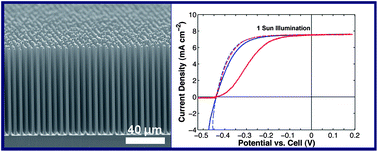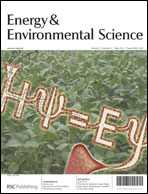Arrays of n-Si microwires have to date exhibited low efficiencies when measured as photoanodes in contact with a 1-1′-dimethylferrocene (Me2Fc+/0)–CH3OH solution. Using high-purity Au or Cu catalysts, arrays of crystalline Si microwires were grown by a vapor-liquid-solid process without dopants, which produced wires with electronically active dopant concentrations of 1 × 1013 cm−3. When measured as photoanodes in contact with a Me2Fc+/0–CH3OH solution, the lightly doped Si microwire arrays exhibited greatly increased fill factors and efficiencies as compared to n-Si microwires grown previously with a lower purity Au catalyst. In particular, the Cu-catalyzed Si microwire array photoanodes exhibited open-circuit voltages of ∼0.44 V, carrier-collection efficiencies exceeding ∼0.75, and an energy-conversion efficiency of 1.4% under simulated air mass 1.5 G illumination. Lightly doped Cu-catalyzed Si microwire array photoanodes have thus demonstrated performance that is comparable to that of optimally doped p-type Si microwire array photocathodes in photoelectrochemical cells.

You have access to this article
 Please wait while we load your content...
Something went wrong. Try again?
Please wait while we load your content...
Something went wrong. Try again?


 Please wait while we load your content...
Please wait while we load your content...